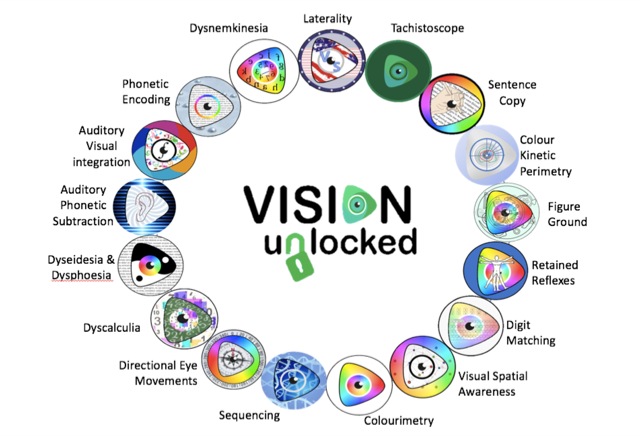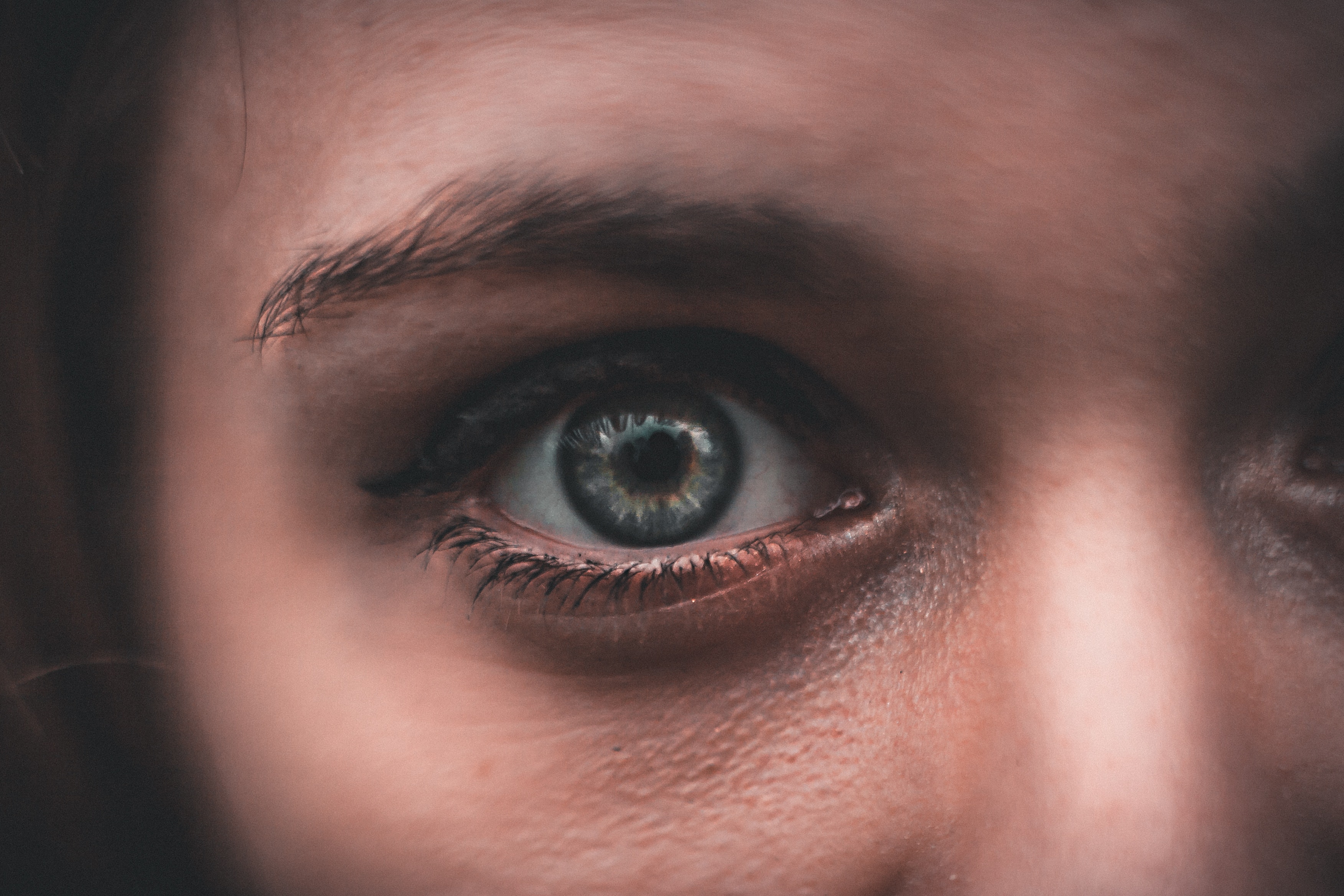VisionUnlocked For Patients
VisionUnlocked is a web based analytical tool linked to an iPad application which enables your optometrist to ascertain where a child between the ages of 6 and 14 years may be having vision developmental difficulties which in turn can lead to learning difficulties.

VisionUnlocked is a test battery which cannot be performed without the evaluation and observation skills of a behavioural optometrist and vision therapist. VisionUnlocked helps your behavioural optometrist to test for visual, auditory, motor, sensory and developmental issues more rapidly, with greater repeatability and without learning bias, than any previous testing regime. VisionUnlocked integrates your concerns about your child's vision with eye-test results and the VisionUnlocked iPad test battery to create fully integrated reports. This enables your behavioural optometrist to recommend to other allied health and educational professionals what activities, modifications and tools can be added to their remediations to allow your child to develop the skills to thrive in the classroom. VisionUnlocked allows your behavioural optometrist to determine whether vision therapy is required, and where on the developmental pyramid to start any remediation. A comprehensive rapid analysis tool allows more time to be spent assisting your child in gaining improvement.
What is Vision?
"Vision is the deriving of meaning and direction of action as triggered by light and emerges from a balanced interplay of neural processes affecting our understanding of where we are placed in space, where objects are located, the clarity of the object and the ability to interpret through language the object at which we are looking. Accurate interpretation requires balance, proprioception, attention, and cognition to derive meaning and direct our action."
 Photo by Nick Demou from StockSnap
Photo by Nick Demou from StockSnap
"When vision is working well it guides and leads; when it does not work well, it interferes."
Why choose a VisionUnlocked Optometrist
Independent behavioural optometrists provide quality vision assessment which reach much further than just 20/20. VisionUnlocked is a tool in their armamentarium allowing more in-depth assessment for dyslexia, breaking it down into its components of dyspraxia, dyscalculia, dysgraphia, dysnemkinesia, dyseidesia and dysphonesia, whilst considering laterality, dominance, midline awareness, auditory processing, sequencing and visual aliasing. VisionUnlocked provides the behavioural optometrist a tool to provide a more in-depth assessment for dyslexia, breaking it down into its components of dyspraxia, dyscalculia, dysgraphia, dysnemkinesia, dyseidesia and dysphonesia, whilst considering laterality, dominance, midline awareness, auditory processing, sequencing and visual aliasing. VisionUnlocked enables rapid age-related assessment of all these criteria, producing a report which guides therapists and educators. Working in combination with the skills of your behavioural optometrist and vision-therapist, VisionUnlocked illuminates the anchors impeding your child’s progress. Your behavioural optometrist will provide the tools and activities required to help remove these anchors.
What makes a Behavioural Optometrist different?
Imagine the eye to be a camera - light enters the pupil / aperture, is focused by the lens onto the retina / film, where the image is captured. When the image is clear we have 20/20 vision. This is far from the complete story. The eye, like the ear, nose or taste buds, is a sensory organ. The retina senses light and sends electrical messages along the nerves to the vision area in the brain. Here the brain assembles all the information and forms a picture or image. To understand or interpret what is seen, it also sends information to many other areas in the brain to integrate what is seen with what is felt and heard, etc.
Behavioural optometrists define vision as more than just 20/20. The ability to focus, maintain focus and direct the eyes smoothly and accurately with efficient stress-free repetition is a learnt ability. We are not born with a visual system which has accurate perception of form and space. Our visual system develops as we learn where our centre of gravity is and where things are in space by using proprioception. "Movement directs vision such that vision can direct movement." We do not 'see' with our eyes, we see with our brain. Our eyes are sensory organs that detect light. Our brain maps the visual picture and marries this with balance, proprioception, smell, taste and sounds to build a map of our world. Everything we see is a picture constructed in and by our brain, after the event has occurred.
Other eye-care practitioners evaluate eye health and visual acuity, and some assess eye teaming in terms of accuracy of directing visual axes, but a behavioural optometrist evaluates all of these and checks how well the eyes can adjust and sustain focus and vergence and repeat again and again. They evaluate the integration of auditory, proprioceptive, vestibular and visual input to understand how the individual gains and maintains concentration on task. A behavioural optometrist understands the importance of functional stress-free binocular vision and how body awareness, laterality, sequencing, dominance and general skills development influences the accuracy of vision.
"The brain receives about 3 million bits of information at every moment, and 2 million of these are from vision"
Vision, vestibular and proprioception are inseparable - our eyes, vestibular system and proprioception work together - if the information from one channel does not match the others, we may start to feel unbalanced, dizzy, disorientated or sick. For example when reading in a car: your eyes may be looking at words and not the scenery, but your vestibular system feels acceleration, deceleration and bumps and may get confused.
"Vision's main purpose is not to see the smallest letters on an eye chart, but rather to direct movement in space"
Vision guides our every movement from walking, driving and writing. It informs us how quickly we need to cross a road to avoid being hit by a car. Vision therapy addresses visual-spatial confusion.
Vision Develops Over Time
We are born with eyesight but vision (our ability to interpret what we see and direct action) is learned. Anything that is learned can be taught and / or 'learned better'.
Some children may not have developed the visual skills required for classroom learning. Tracking across a page when reading or sustaining focus and convergence at near for required periods of time can be difficult. Anti-stress glasses in the classroom, or exercises to address underdeveloped skills, or purposeful play to naturally develop those skills can alter lives.
Behavioural optometrists help your child to develop the skills to make sense of what they see, i.e. extracting the important information from the background (figure-ground) or improving visual memory. Vision therapy integrates vision with fine motor skills (eye hand coordination) developmental delays, and many other, visual dysfunctions.